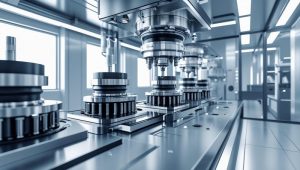The North America current transducer market is undergoing a significant transformation, fueled by the region’s growing emphasis on smart energy management, industrial automation, and grid modernization. As the demand for real-time monitoring and precise current measurement intensifies, current transducers—key devices that convert electrical current into measurable output signals—are finding expanded applications across diverse sectors. At the heart of this evolution is the integration of artificial intelligence (AI), which is reshaping the way current transducers are designed, deployed, and optimized.
AI is increasingly being embedded into current sensing systems to deliver smarter, more adaptive monitoring capabilities. By leveraging machine learning algorithms, current transducers can now detect anomalies, predict equipment failures, and optimize energy usage with greater accuracy than ever before. This advancement is particularly critical in industries such as manufacturing, utilities, and transportation, where unplanned downtime and energy inefficiencies can result in significant financial losses. AI-enabled current transducers provide continuous insights into electrical loads and system behavior, enabling predictive maintenance and real-time system diagnostics.
Download PDF Brochure @ https://www.marketsandmarkets.com/pdfdownloadNew.asp?id=26656433

One of the most promising areas of growth lies in smart grid applications. North American utilities are investing heavily in grid digitalization, and AI-integrated current transducers are becoming essential for dynamic load balancing, fault detection, and energy distribution optimization. These smart transducers enhance the responsiveness and resilience of the grid by allowing utilities to manage electricity flow proactively and accommodate the increasing influx of renewable energy sources such as solar and wind.
The automotive sector, especially electric vehicles (EVs) and hybrid electric vehicles (HEVs), is another major driver of current transducer market growth. EV powertrains require precise current monitoring to control battery charging, inverter operation, and motor performance. AI-enhanced current transducers are improving energy efficiency, thermal management, and safety in EV systems. As the U.S. and Canada continue to promote green mobility through policy incentives and infrastructure development, demand for high-accuracy, compact current transducers will continue to rise.
In industrial automation and robotics, current transducers are evolving into intelligent sensors capable of learning and adapting to changing load conditions. AI is enabling these devices to communicate with control systems, adjust their performance based on workload, and contribute to overall equipment effectiveness (OEE). North American manufacturers, driven by the Industry 4.0 movement, are rapidly adopting such smart sensing solutions to enhance productivity and reduce operational risk.
Healthcare, data centers, and renewable energy systems also represent growing segments where AI-powered current transducers are gaining traction. In data centers, they help optimize power usage effectiveness (PUE) by providing detailed insights into current flow across servers and cooling systems. In solar and wind power systems, they support efficient energy harvesting and grid integration through precise, real-time current analysis.
Looking ahead, the North America current transducer market is expected to see continued growth driven by AI innovations, increasing electrification, and stricter energy efficiency regulations. Emerging trends include the development of wireless and IoT-enabled current transducers, miniaturized designs for compact electronics, and self-calibrating sensors that reduce maintenance requirements. As the region accelerates its transition toward a smarter, cleaner energy future, current transducers—now augmented by AI—will play a foundational role in enabling intelligent, data-driven power systems.
